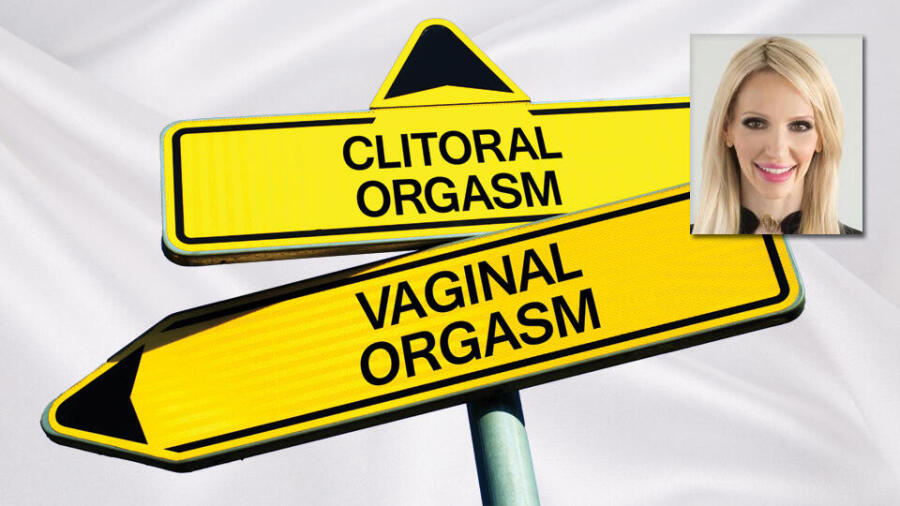The clitoris and the G-spot. Between them, these two anatomical features dominate both popular discourse about sexual pleasure and the world of pleasure products. There are countless toys designed to stimulate the clitoris and/or G-spot, whether separately, in succession or simultaneously. The underlying assumption is that one or the other — or perhaps both together — is a “magic button,” the stimulation of which results in orgasms for bodies with a vulva.
However, not all vulvas have a visible clitoris, and not all vulva owners know where their clitoris is. Nor do some of their partners. Similarly, not everyone with a vagina can find their G-spot, let alone climax from stimulating it. In fact, some people find G-spot stimulation uncomfortable.
Remind customers that sexual pleasure for bodies with a vagina or clitoris does not rely on just these areas.
I’ve encountered these scenarios in my work as a certified clinical sexuality coach, and pleasure product retailers are likely to encounter them as well. So let’s review some relevant information and figure out what all this means for pleasure products marketed for the G-spot.
What is the G-spot?
Vaginal penetration, whether with a penis or a toy, is generally not the easiest or most effective way to stimulate the clitoris — and stimulating the clitoris is the most reliable way to encourage an orgasm in people with vulvas, according to research. So it’s no surprise that mid-20th century gynecologist Ernst Gräfenberg discovered that his clients very rarely reached orgasm during intercourse.
Gräfenberg attributed this to inadequate understanding of a “urethral erotic zone” a few centimeters inside the vagina, on the belly side. This zone, he found, was comprised of erectile tissue surrounding the urethra, tissue that moved and swelled when aroused. When Rutgers University sexologist Beverley Whipple identified an area similarly located in the vagina that swelled with pleasure, she named it the “Gräfenberg spot,” later known as the G-spot.
Dr. Helen O’Connell is an Australian urologist whose 2004 doctoral thesis is arguably the most thorough piece ever written on the clitoris. O’Connell’s MRI imaging of cadavers revealed no erectile tissue in the vagina itself. Instead, she determined that the key to this so-called “spot” was two bulbs resembling flattened tulips, which hug the vaginal walls and are connected to the body of the clitoris by a root. These bulbs are comprised of spongy erectile tissue similar to the body of the clitoris and its arms, or “crura,” which sit outside the bulbs. Essentially, O’Connell demonstrated that the “clitoris versus G-spot” dichotomy is false; in fact, the two are the same.
Of course, some people are orgasmic from vaginal penetration. Two of the most plausible explanations for this, proposed over the years, are that vaginal penetration stimulates the erectile tissue Gräfenberg identified surrounding the urethra, and that vaginal penetration simulates O’Connell’s vestibular bulbs, which extend from the head of the clitoris to the opening of the vagina. Pressure on the aroused internal clitoris, especially the bulbs, is likely responsible for the intense sensation some experience, which gave rise to the idea of a unique spot. However, O’Connell concluded that the G-spot is not a single anatomical construct or magic button, but rather a complex junction of tissues.
How to encourage G-spot orgasms
Some customers buy a G-spot toy knowing exactly how to stimulate this area on themselves or on a partner. Others are less well-versed, and can’t seem to orgasm even after using the toy repeatedly. The comments I usually hear from this latter group fall into two categories: “Something is wrong with the toy” or “Something is wrong with me.” In many cases, however, the issue is not an inability to reach clitoral orgasm, but rather that the clitoris — external and/or internal — has not been sufficiently stimulated.
When I hear people say that a clitoral or G-spot toy didn’t work for them, I first delve into their understanding of anatomy, reviewing some of the information above. Then I share some of the same tips that pleasure product retailers can fall back on to help customers with their G-spot toy experience:
Tips for customers
First, direct the customer to a high-quality toy designed specifically for their needs and wants. Do they need a toy designed to stimulate the clitoris before penetration targets its deeper, internal structure?
Second, help the customer to maintain realistic expectations. Orgasm is never guaranteed, whether attempting to achieve it alone, with a partner or with a toy. Encourage them to think about pleasure as the goal, rather than focusing solely on orgasm. If they’re feeling frustrated about not climaxing fast enough or at all, remind them that if they are experiencing pleasure, then they are achieving their goal.
Third, ask the customer to consider whether they are putting in the type and amount of effort needed. Every body is different, so suggest that they take time to explore and understand their own. For instance, research has found that people with thicker tissues in their G-spot area are more likely to experience orgasms from G-spot stimulation, compared with those with thinner tissues.
Sometimes, customers may indeed need help from a sexuality or medical professional. Often, however, they can benefit from some basic anatomical education about the G-spot as a zone and how to apply pressure there using a high-quality, purpose-designed toy.
Finally, remind them that sexual pleasure for bodies with a vagina does not rely on just these areas. There are many body parts and types of touch that give a person pleasure. Often, pleasure is more about what is happening in the brain than in the genitals, so encourage the customer to think about how other turn-ons and turn-offs may be affecting their mood and arousal.
Vanessa Rose is a certified clinical sexuality coach and the account manager for Australia and New Zealand at Svakom.








